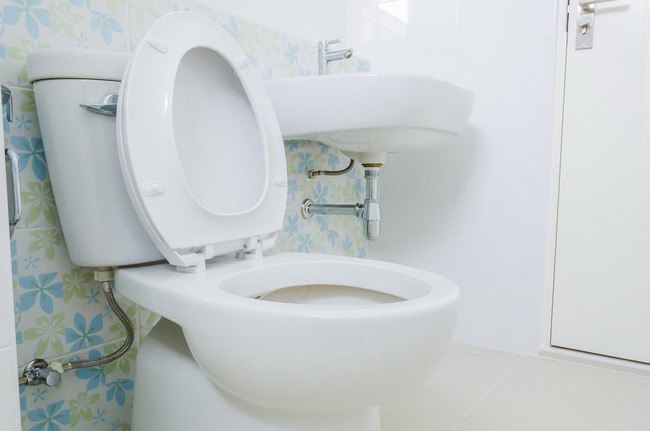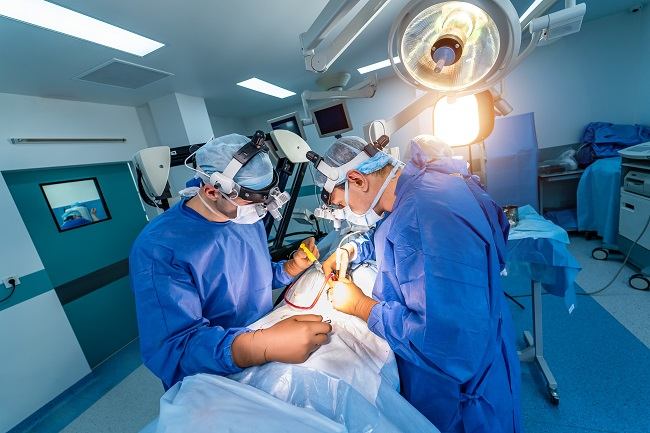The bubonic plague is also known as plague or pestilence, is an infection caused by bacteria Yersinia pestis. These bacteria can be spread by means of fleas and live as parasites on animals around us, such as rats.
If you have chills and a sudden onset of fever, enlarged lymph nodes, and dark patches on the skin, try to see a doctor. Because it could be a sign of bubonic plague.

There are 3 main types of bubonic plague or pestilence, namely: bubonic plague, pneumonic plague, and septicemic plague. Swollen lymph nodes are a typical symptom of this type bubonic plague. Type pneumonic plague occurs when the infection affects the lungs, whereas septicemic plague occurs when bacteria multiply in the patient's blood.
Treatment of bubonic plague must be done as soon as possible. If not, it can cause serious complications, even death.
Transmission Yersinia Pestis to Humans
Even though bacteria Yersinia pestis found in animals, bubonic plague can be transmitted to humans. One way of transmission is through the bite of rat fleas or direct contact with tissues or body fluids of animals affected by the plague.
Rats, dogs, squirrels, guinea pigs, cats, deer, rabbits, camels, and sheep are animals that act as intermediaries. Meanwhile, the most frequent intermediary for outbreaks is fleas, which are usually present on rats.
The bacteria that causes the bubonic plague will grow and develop in the throat of the tick. When the tick bites the skin of an animal or human and sucks blood from the host's body, that's when the bacteria exits the tick's throat and enters the skin. Furthermore, the bacteria will attack the lymph nodes to cause this part to become inflamed. From here, bubonic plague can spread to other organs of the body. In fact, it can get to the lining of the brain, although this is rare.
Know the Types of Plague Disease
After the body is contaminated with bacteria, the symptoms of bubonic plague will usually appear within 1 to 7 days (average 3 days). Here are the three main types of bubonic plague and their symptoms:
- Bubonic plague
This is a type of bubonic plague that affects the lymph nodes. In addition to swollen lymph nodes, other accompanying symptoms are fever, chills, fatigue, muscle aches, and headaches. Swollen lymph nodes can occur in the armpits, groin, or other areas. This swelling may be accompanied by the formation of pus in the inflamed lymph nodes.
- Pneumonic plague
Plague infection that attacks the lungs. Symptoms can include cough, fever, and difficulty breathing. This type is the most dangerous. If not treated immediately, it can be life threatening.
- Septicemia plaguePlague infection that occurs in the blood. Symptoms are fever, chills, diarrhea, vomiting, and abdominal pain. Sometimes even accompanied by bleeding through the nose, mouth, and anus. In this type of bubonic plague, the infection can spread to various parts of the body, such as the feet and hands, causing black spots due to the death of body tissue in these areas.
How to avoid the bubonic plague
In order not to get bubonic plague, there are several ways you can do to avoid it, namely:
- Wash hands regularlyWash your hands regularly using water and soap as an effort to maintain health. Do this especially before and after cooking or serving food, after going to the toilet, and after coming into contact with animals. This method will keep you from various diseases, including the bubonic plague.
- Keep a distance from infected animals or humansWhen a person or animal is infected with a disease, especially pneumonia, try to keep your distance, at least until the person or animal is treated by a doctor. A safe distance is one meter from an infected person or animal.
- Watch out for sick or dead animalsYou are advised to avoid sick or dead animals. If you have to handle it, make sure you use a mask, gloves, and goggles, so you don't catch the bubonic plague that may be present in the animal.
- Keep mice out of the houseClean your house from rats and make sure the floors or items in the house are not contaminated by rats. Rats are the carriers of the bubonic plague into the house.
- Avoid fleasDo not let the house or the environment where you live there are fleas. Fleas that bite sick animals or fleas that can bite directly on your skin are very likely to give you the bubonic plague. Use a mosquito repellent to repel fleas or apply mosquito repellent on your skin to avoid being bitten by insects, including fleas.
Intermediaries carrying the bubonic plague are very easy to find all around us, including the animals we keep. Therefore, take precautions as mentioned above, so as not to get this disease. If infected with bubonic plague, treatment with antibiotics according to a doctor's prescription must be carried out immediately, to avoid dangerous complications.









